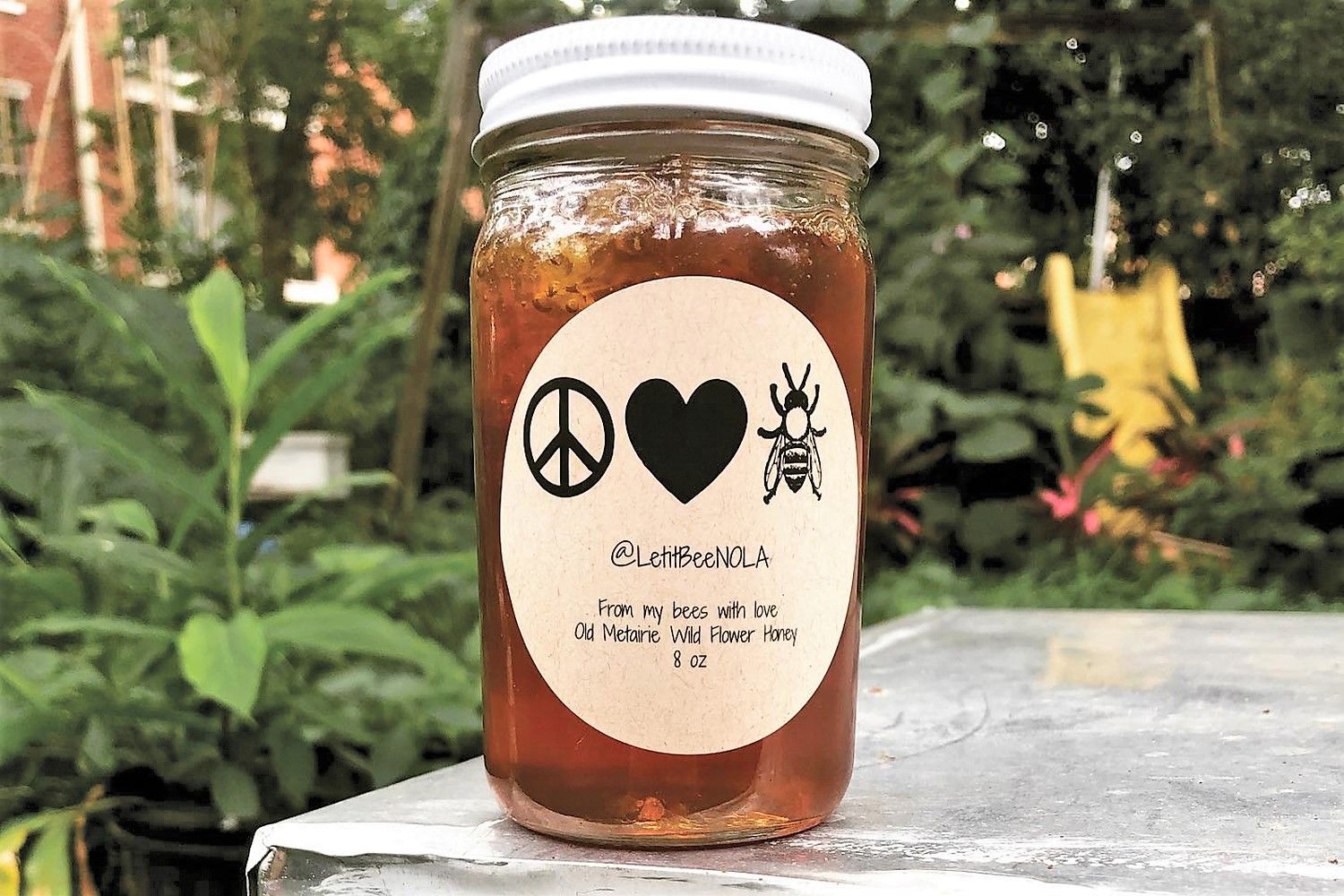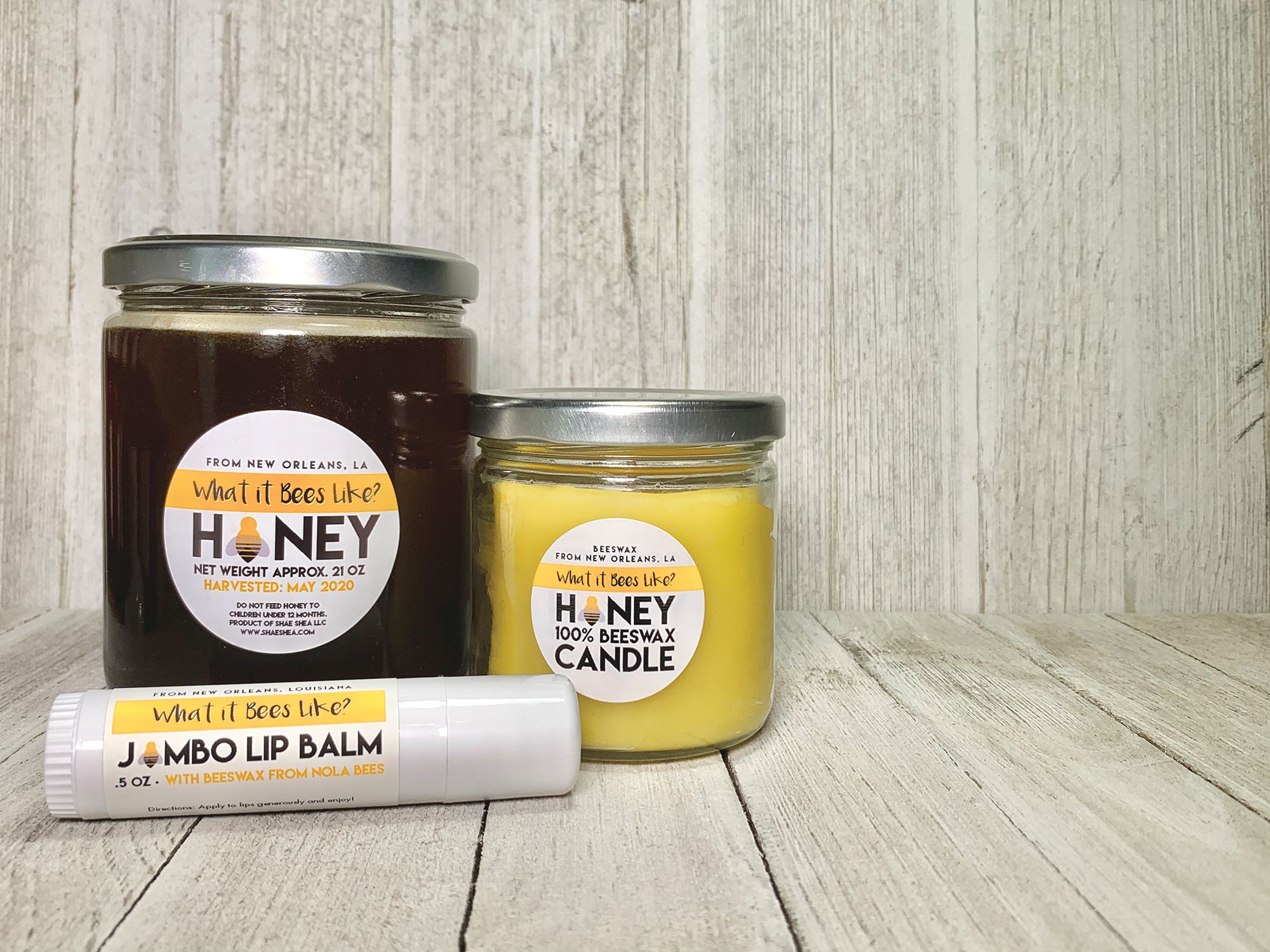When you think of sweeteners produced in Louisiana, your thoughts might first go to cane sugar. But if you're looking for an alternative, you could try one that's even cultivated right in New Orleans: local honey.
The bee-made food is a tasty alternative to sugar, jellies, and
syrups for snacking or cooking, and buying honey produced locally helps keep
money in the local economy. It also helps
support local agriculture and projects that rely on the sweet substance as an
income stream.
Capstone, a nonprofit that builds food-growing community gardens
in the Lower Ninth Ward, started cultivating beehives as a way to ensure its
plants get pollinated, said founder David Young.
"A lot of people don't realize that Katrina destroyed wildlife as well as property and human life, and so one of the things that was pretty much decimated in the area was honeybees," Young said.

The group started with just one hive and now has about 30, with honey sales funding approximately one-third of the organization's activities. The honey is available at a few locations throughout the area, including The Coffee House (7265 St. Claude Ave.) in Arabi,Urban Roots Garden Center (2375 Tchoupitoulas St.) Uptown, or the New Orleans Food Co-Op (2372 St. Claude Ave.) in the Marigny.
Another option commonly found at the Food Co-Op is jarred honey
from St. Rose's Happy Hen Farm, where the husband-and-wife team of Matias
Raygoza and Kathia Duran also raise free-range chickens for eggs. A few years
ago, Duran said, a man visited the farm asking if he could place some beehives
there, and Raygoza quickly got into raising bees of his own.
"One thing I can tell you about beekeepers: They get really
obsessed with it," Duran said.
You can also often pick up honey at the various locations of the
Crescent City Farmer's Market, where beekeeper Gerard Burg sells what his bees
produce at three hive sites between the towns of
Independence and Amite. "A bee's range is about three miles from where
the hives are," he explained.
Other local bee products are available, too: Adam Strain said
fans of his Let It Bee Apiary have bought lip balm and candles made from wax
from his bees. Those who want those or his honey, which is also available at
Stein's Deli (2207 Magazine St.), can make purchase arrangements through his
Instagram account at @letitbeenola.
Some allergy sufferers swear by honey produced nearby—Young
suggests 25 miles is about the limit—saying that a regular taste of the local
product helps keep away coughs and runny noses. The theory is that small doses
of pollen found in the honey help immune systems get used to being exposed
without overreacting.

Honey is also said to have antimicrobial properties—it doesn't
easily spoil, and, historically, has even been used topically to treat wounds
and skin conditions like eczema. The CDC recommends it not be given to infants
under one year old because of a risk of bacterial infections.
What types of flowers bees visit on their foraging trips
unsurprisingly has an effect on the color and flavor of the honey. Manuka
honey, primarily produced in New Zealand from bees that pollinate the namesake
Manuka tree, is prized throughout the world for its flavor and purported
medicinal properties. Locally, Northshore beekeeper Adrian Juttner, who offers
honey at Rose Garden Center in Marrero and a grocery store in Abita Springs,
keeps bees near his chestnut grove near Poplarville, Mississippi. The honey
from those bees has a distinctive "burnt
sienna" color, he said, and a somewhat bitter flavor that's beloved by
some buyers.
"It's for aficionados," he said. "People who appreciate, for example, truffles and appreciate real Russian caviar—the real hard-to-get stuff."

Shae Thomas, who keeps two hives of bees at her home in Gentilly
Woods (in accordance with city safety rules), said her honey often has a lemony
flavor from citrus trees in her yard. The honey is available at her website (shaeshea.com),
along with beeswax candles and lip balm.
Producers say their honey varies from season to season, since
their bees are feasting on different flowers throughout the year. That's not
the only factor that affects honey: Many beekeepers say that there are
differences based on whether honey is filtered to remove solids, whether it's
pasteurized or otherwise heated, and when it's extracted from the hive.
"One little detail is that he usually harvests the honey when
it's a full moon because that's when the honey is denser," Duran said of her
husband. "If you harvest the honey before that, it's very liquid."
Keeping bees isn't always easy. News reports have been filled
with accounts of bee colony collapses and dwindling populations, thanks to
everything from pesticides to bee parasites. Local honey honchos say Louisiana
is no exception. Spraying is commonplace to kill mosquitos, and warm winters
mean parasites can survive from year to year. The high humidity also makes it
critical to keep honey in sealed containers once it's extracted, said Juttner,
since honey will naturally absorb water from the air. But while times can be hard,
Juttner, who is largely retired from running a tree service, said he plans to
stick with cultivating the honeybees he's been working with for decades.
"It doesn't matter whether I make a little more or a little
less on them," Juttner said, simply happy to be working with his bees
full-time, as he loves to do. "I guess we're living the good life,
really."

